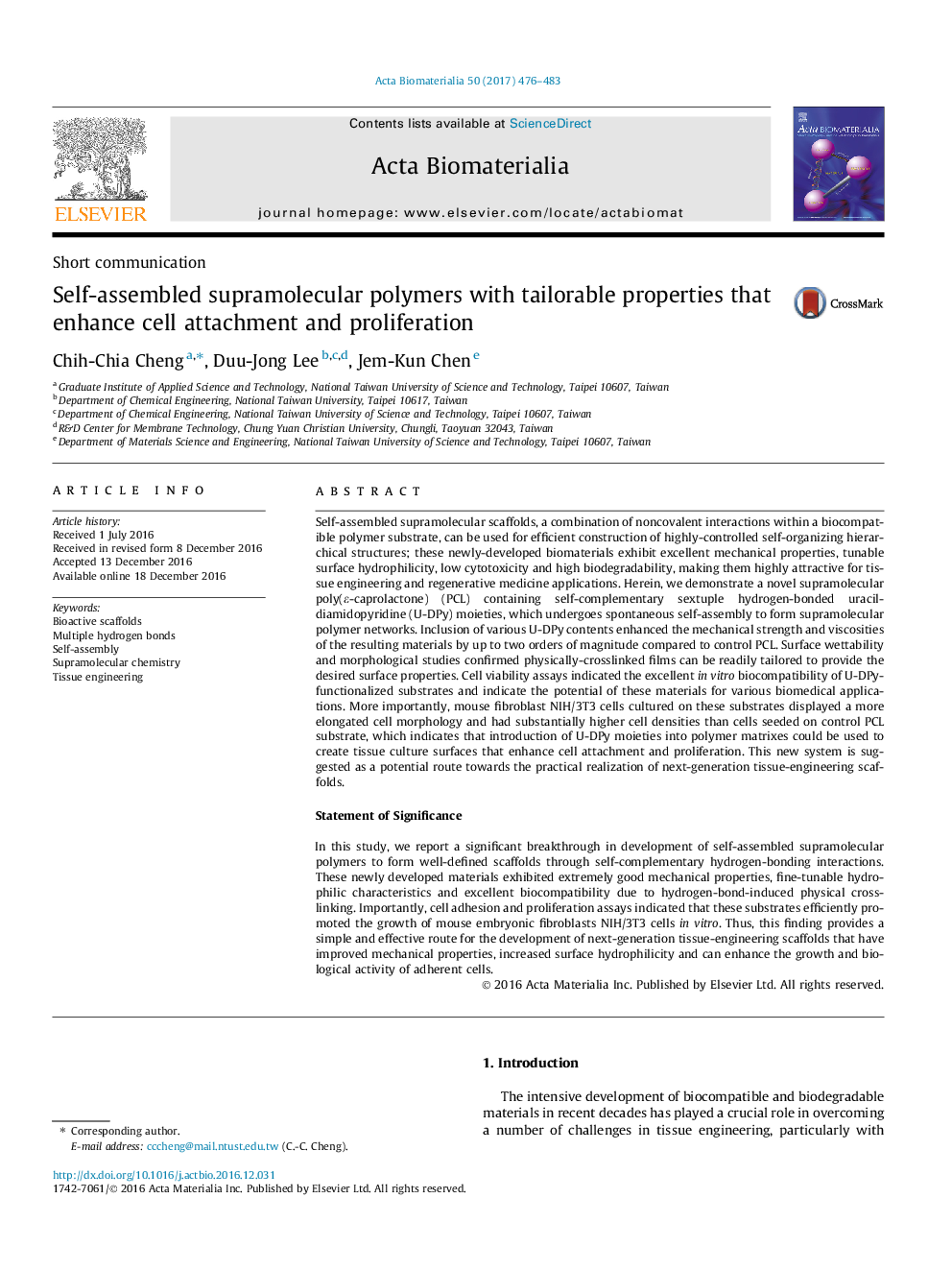| کد مقاله | کد نشریه | سال انتشار | مقاله انگلیسی | نسخه تمام متن |
|---|---|---|---|---|
| 6449753 | 1415936 | 2017 | 8 صفحه PDF | دانلود رایگان |
Self-assembled supramolecular scaffolds, a combination of noncovalent interactions within a biocompatible polymer substrate, can be used for efficient construction of highly-controlled self-organizing hierarchical structures; these newly-developed biomaterials exhibit excellent mechanical properties, tunable surface hydrophilicity, low cytotoxicity and high biodegradability, making them highly attractive for tissue engineering and regenerative medicine applications. Herein, we demonstrate a novel supramolecular poly(ε-caprolactone) (PCL) containing self-complementary sextuple hydrogen-bonded uracil-diamidopyridine (U-DPy) moieties, which undergoes spontaneous self-assembly to form supramolecular polymer networks. Inclusion of various U-DPy contents enhanced the mechanical strength and viscosities of the resulting materials by up to two orders of magnitude compared to control PCL. Surface wettability and morphological studies confirmed physically-crosslinked films can be readily tailored to provide the desired surface properties. Cell viability assays indicated the excellent in vitro biocompatibility of U-DPy-functionalized substrates and indicate the potential of these materials for various biomedical applications. More importantly, mouse fibroblast NIH/3T3 cells cultured on these substrates displayed a more elongated cell morphology and had substantially higher cell densities than cells seeded on control PCL substrate, which indicates that introduction of U-DPy moieties into polymer matrixes could be used to create tissue culture surfaces that enhance cell attachment and proliferation. This new system is suggested as a potential route towards the practical realization of next-generation tissue-engineering scaffolds.Statement of SignificanceIn this study, we report a significant breakthrough in development of self-assembled supramolecular polymers to form well-defined scaffolds through self-complementary hydrogen-bonding interactions. These newly developed materials exhibited extremely good mechanical properties, fine-tunable hydrophilic characteristics and excellent biocompatibility due to hydrogen-bond-induced physical cross-linking. Importantly, cell adhesion and proliferation assays indicated that these substrates efficiently promoted the growth of mouse embryonic fibroblasts NIH/3T3 cells in vitro. Thus, this finding provides a simple and effective route for the development of next-generation tissue-engineering scaffolds that have improved mechanical properties, increased surface hydrophilicity and can enhance the growth and biological activity of adherent cells.
A novel series of supramolecular polymers containing pendant self-complementary multiple hydrogen-bonded groups not only serves as an efficient scaffold for enhanced physical performance, but also promotes cell-substrate adhesion to facilitate tissue regeneration.185
Journal: Acta Biomaterialia - Volume 50, 1 March 2017, Pages 476-483
